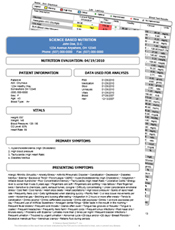With trendy marketing tactics and endless options, the soy industry has become worth hundreds of millions of dollars. John Pi, owner of the Soy Luck Club in New York City which features all things made of soy explains his inspiration: “Look at the soy section in the supermarket. It’s almost as big as the dairy department.” For a long time tofu was the best known human food made from soy, but now there are plenty of options to choose from that are soy based. These options are trendy and marketed as “healthier” for you. Why has soy become so popular? Are there underlying truths behind the soy market of which consumers are not aware? Let’s take a look.
More than 10,000 soybean varieties have been discovered by US researchers. Aside from food, soybeans are vital to the production of livestock feed, industrial oils, infant formula, soaps, and other household objects. In 1935, Henry Ford was building automobiles out of plastic made from soybeans. Even the automobile’s exterior! It wasn’t until the 1940’s that soybean farming really took off in America. The United States started producing it for China whose soybean fields were devastated by World War II. Currently the United States produces more soybean bushels than any other country at 32%. (1)
You might think, “What about the Asian diet which promotes soy?” Despite common beliefs, soy is not the main source of protein in the Asian diet. While they do consume small quantities of fermented soy such as miso and tempeh, the average diet only totals about 10 grams soy protein each day. They also pair soy with animal proteins such as fish broth which make it more digestible. American soy manufacturers recommend amounts 10 times higher at 100 grams daily. (2)
American livestock currently consume about 25 million tons of soybean meal each year. No other high protein animal feed comes close. This boom in the use of soybean meal for livestock feed began in the 1950’s and has been on the rise since.
You might consume large amounts of soy daily without even realizing it. Did you know that almost 80% of the oil Americans eat is soy? (2) Soybean oil is found in hundreds of processed foods and has replaced real fats such as butter, milk, meat, and fish in the standard American diet.
Soy oil is produced with immense heat and pressure. Oils tend to go rancid or spoiled when they are heat treated. Olive oil is “cold pressed” to prevent this damage. For soy however, the heat is not enough to finish extraction. Factories must treat the pulp with hexane, a chemical solvent, in order to extract the last bit of soy oil from the pulp. To help with preservation and to make it solid at room temperature, liquid soy oil may be further processed by blasting it with hydrogen and mixing with tiny nickel oxide particles in a process known as “hydrogenation”.
If you look on the ingredient list of many foods, especially processed foods in the aisles of the supermarket, you will see ingredients such as “soy lecithin” and “isolated soy protein”. Soy lecithin is an additive to many foods and also has purposes in the industrial field because it overcomes the natural repulsion between oil and water to keep mixtures from separating too quickly. Popularly used in cooking sprays, soy lecithin keeps your baked goods from sticking to the pan.
The drawback? Soy lecithin has known effects on reproductive abnormalities and sexual dysfunction. Containing the compound phytoestrogen, it produces similar effects on the body as estrogen. One study reported by Cornell University examined 28 women receiving soy supplements for six months. The women were found to have an increased growth of milk ducts in their breasts, which are a leading forerunner of cancer according to the Program on Breast Cancer and Environmental Risk Factors in New York State. (3)
Soy protein isolate is an ingredient used in meat and dairy imitators. It’s used extensively in school lunch programs, commercial baked goods, diet beverages and fast food products. The results of soy protein are not wholesome. Soy protein processing produces the natural form of monosodium glutamate (MSG).
The claim on soy protein isolate, states that it is 90%-95% protein based and nearly carbohydrate and fat free. However, when compared to whole egg and egg white, soy has a much lower amount of protein deposited per gram of protein absorbed. With low nitrogen retention, optimal muscle growth will not be achieved. Soy protein isolate contains certain anti-nutrients, like trypsin, that may cause the body to experience delay in digesting food and in effect, a delay in absorbing nutrients. This in time can lead to chronic nutrient deficiencies.
In men, soy protein has shown to reduce testosterone levels and lower sperm count. New York University’s Langone Medical School recommends that “men who struggle with problems related to lowered testosterone, such as a decreased libido, should avoid consuming soy supplements and soy foods.” (4)
In the United States, about 25 percent of formula-fed babies receive soy-based formula. Soy-based formulas contain high levels of phytoestrogens like genistein. Genistein mimics that action of estrogen and it’s been shown that “genistein levels measured in the blood of soy-fed infants are roughly 10 times higher than phytoestrogen concentrations known to alter a woman’s menstrual cycle.” (5) Some of these changes can persist into adulthood.
Goitrogens are another problematic component of soy. Goitrogens are substances that block the synthesis of thyroid hormones and interfere with iodine metabolism, thereby interfering with your thyroid function.
Vegetarians who consume tofu and bean curd as a substitute for meat and dairy products risk severe mineral deficiencies. The results of calcium, magnesium and iron deficiency are well known. (6)
Protein Options For Vegetarians: Beans, Nuts, Seeds, Sprouts, Quinoa, Cashew/Almond Butter, Flaxseed, Pea Powder, Rice Powder
However, a lack of vitamins and minerals doesn’t just occur in vegetarians. You cannot rely on the media to give accurate and non-biased knowledge. The fact is soy is one of the most highly processed foods on the market. Just because a food is “low in cholesterol” or “high in protein”, doesn’t make it “healthy”.
Do the research if you are not sure about the different views of marketed “health foods”. Get advice from a trained health care professional. Knowing exactly what your body needs can be assessed by a comprehensive blood analysis and hair tissue mineral test. These objective testing methods can lead you down the right path towards optimal wellness.
References:
- North Carolina’s Soybean Producers Association, Inc. The History Of Soybeans. http://www.ncsoy.org/ABOUT-SOYBEANS/ History -of-Soybeans.aspx accessed on September 27, 2012
- Planck, Nina. The billion dollar myth-How did soy get its reputation as a cure-all for modern ailments? Follow the money …Society For Culinary Arts and Letters. May 19, 2003 http://www.propertyrightsresearch.org/articles2/billion.htm
- Cornel University; Phytoestrogens and Breast Cancer; Barbour S. Warren and Carol Devine, Ph.D.; 2002
- “European Journal of Clinical Nutrition”; “Dietary Supplements of Soya Flour Lower Serum Testosterone Concentrations”; D. Gardner-Thorpe et al; January 2003
- Cimafranca, MA, J Davila, GC Ekman, et. al. Acute and chronic effects of oral genistein administration in neonatal mice. June 2, 2010 Biology of Reproduction http://dx.doi.org/10.1095/biolreprod.109.080549
- Fallon, Sally and Enig, Mary PhD. New soy update. Nexus Magazine, Volume 7, Number 3 (April-May 2000). http://articles.mercola.com/sites/articles/archive/2000/04/09/soy-research-update.aspx


